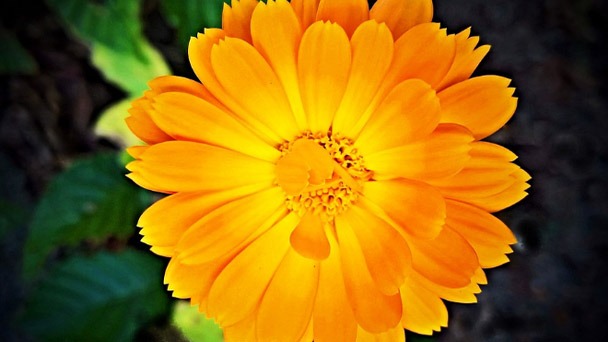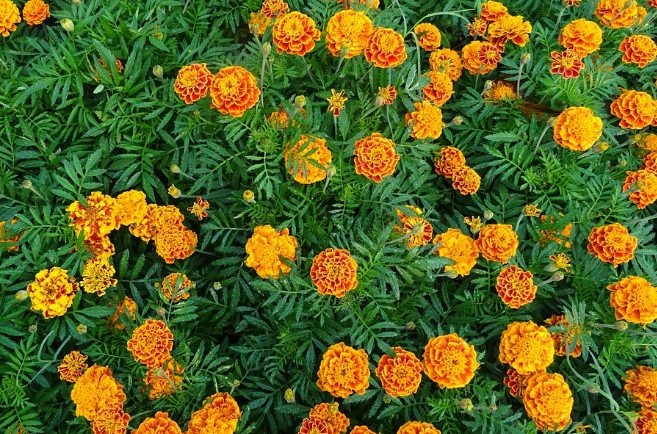How to Deadhead Marigolds - When Should I Prune
Written by Ivy
Dec 30 2022

Deadheading is the process of removing spent or dead blossoms to help encourage new flower buds, and many plants benefit from this extra maintenance.
Generally speaking, to deadhead marigolds, you must choose old, dying, or brown flowers and snip them just below the calyx in the morning. Also, ensure to deadhead your Marigolds at the right time after the flower develops dying signs.
How and When to Deadhead Marigolds
You might not be familiar with the regular deadheading of marigolds, but it is a straightforward procedure.
Even though it's not necessary, deadheading properly will improve your garden.
Should You Deadhead Marigolds?
Deadheading is often a matter of personal preference, but it has its benefits when done right.
Imagine your plant is a builder with limited materials.
It may concentrate on strengthening the foundation (roots), the main structure (foliage and stems), or the aesthetics (flowers).
When the marigold blooms, it's pulling resources to provide all of that window dressing.
The plant has two options when dealing with dying flower heads: it can either continue to use resources to try to repair the damage or it can throw away the damaged item and replace it with a new one.
Since marigolds are typically grown as annuals, they frequently have fewer resources to distribute and, depending on the quantity of those resources, may bloom only once or multiple times during the growing season.
When deadheading, you're helping the plant make this decision by removing the damaged item so the plant can replace it with a new one.
So throughout the entire season, another fresh and vibrant marigold flower stem will keep emerging.
Naturally, you can choose to omit deadheading without endangering the plant.
Simply put, this means that fewer new blooms will appear because the plant will continue to feed its dying flowers until they naturally drop off.
However, this does provide the advantage of allowing the plant to self-seed so you won't have to manually plant more the following year.
When to Deadhead Marigold?
Marigolds should be deadheaded as soon as they reach their final stage of flowering in the flowering cycle.
Deadheading isn't a one-and-done job, but an ongoing process that lasts as long as the plant is in bloom.
Start when you notice the first flower starting to fade and continue until the plant stops producing new blooms.
Daily inspections will help you perform deadheading more successfully because each flower may start to fade at a different rate.
While it's frequently accepted practice to deadhead flowers as soon as they start to fade or acquire a brownish tinge, you can also decide to wait until they begin to wilt with equivalent results.
The timing and frequency of deadheading ultimately depend entirely on personal preference.

How to Deadhead a Marigold
| Materials | Purpose |
|---|---|
| Isopropyl Alcohol | To sterilize the gardening equipments |
| Pruning Shears | To snip off the flower |
| Gardening Mask | Very useful if you are allergic to pollen |
| Gardening Gloves | To protect the hands |
| Basket | To collect snipped flowers |
There are two ways to deadhead your marigolds, although we don't recommend simply playing a lot of Jerry Garcia if you want the best possible results.
Grab some sterile, sharp hand pruners or scissors as an alternative; it will be more practical.
It should be noted that you can choose to pinch the branches instead of cutting them, but the results may be a little messier.
Any flower that has started to turn brown should be your main focus because this indicates that it is nearing the end of its lifespan.
Make your cut (or pinch and tear) directly beneath the browning bloom, making sure to collect any developing pods.
Even if you pinch off the flower, the plant will immediately redistribute resources to produce new blooms.
As a result, already-blooming flowers will brighten up and new, fresh blooms will appear.
Care for Marigold Plant After Deadheading
Depending on the amount of the trimming, Marigolds experience shock when you cut off any part of them.
For them to overcome the stress of pruning, aftercare is crucial.
After deadheading your marigold plant, I've provided some care instructions below.
- After deadheading, give your marigolds a good soak in water to help the plant recover from the stress of pruning.
- Avoid direct overhead watering, and use the bottom watering approach for your potted Marigolds.
- Phosphoric fertilizers should be used during growth rather than nitrogen-rich fertilizers to encourage vigorous blossoms.
- To promote growth, keep cutting off the plant's leggy growths and decaying components.
- Make sure your potted marigolds spend at least 6 hours in both the full sun and the partial shade. (Read More: Do Marigolds Need Full Sun or Shade)
- Keep an eye out for common pests that eat nutrients, and use neem oil to repel them.
Furthermore, the care requirements for marigolds grown in gardens and pots are essentially the same.
So, whether it's a garden or a potted Marigold, take a deep breath and remove any dead or dying flowers to promote effective blooms.
How Often Should I Deadhead?
You are free to deadhead whenever the hell you feel like it. Any hour of the day is acceptable, as is any day of the year.
I suggest finishing this quick task when you have some time to lose yourself in it. My personal favorite time is in the morning, while holding a bouquet of marigold buds in one hand and a cup of coffee in the other.
Depending on your preference, you could care for the plants daily or every few days. Instead of doing this every day, I'd advise doing it every few days.
This enables your flowers to bloom and do their thing, and it gives the pollinators a chance to take advantage of the free meal.
Also Read:
Conclusion
Unlike other annual plants, your Marigold is rather an easy-going plant that won't mind if you deadhead or not.
Though it will be much better for your plant to deadhead marigolds.
In order to reap the benefits of longer blossoms, keep up the good work by applying the advice in this article.
Latest Updated
- Benefits of Bugleweed - 7 Science-backed Health Benefits
- Bugleweed Dangers & Side Effects - Is It Poisonous?
- How to Plant Evergreen Trees - What You Should Know
- When to Plant Evergreens - Grow Guide for Evergreen Trees
- 12 Wonderful Evergreen Shrubs for Your Garden
- 12 Popular Evergreen Plants with Pictures for Beginners
- When And How To Prune A Lilac Bush Like a Pro
- How to Grow & Care for Lilac Vine (Hardenbergia Violacea)
- Japanese Lilac Tree (Syringa Reticulata) Care & Propagation Guide
- Shumard Oak Pros and Cons - What to Know
Popular Articles
- Winter maintenance of Antirrhinum Majus
- How to Grow Terminalia Mantaly Tree
- How to Grow and Care for Crossostephium Chinense
- How to grow Antirrhinum Majus in spring
- Peristeria Elata (Dove Orchid) Profile: Info & Care Guide
- Underwatered Snake Plant (Sansevieria Trifasciata) - Signs And How To Fix
- How to Care for Brazilian Jasmine Plant (Mandevilla Sanderi)
- How to Grow & Care for Graptopetalum Purple Delight in Summer
- Rosa Chinensis (China Rose): Plant Growing & Care Tips
- How to Care for Baby Sun Rose (Aptenia Cordifolia)